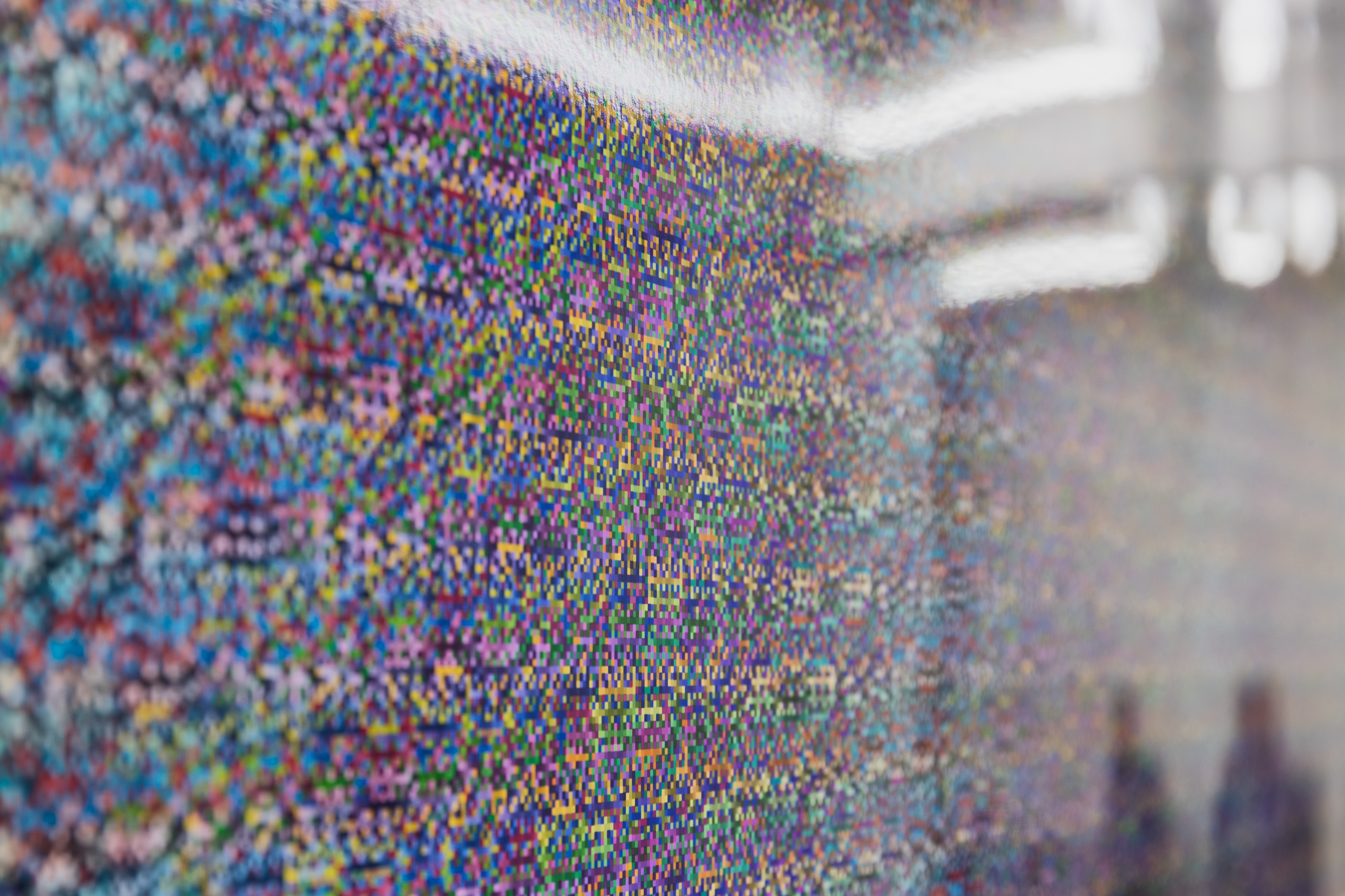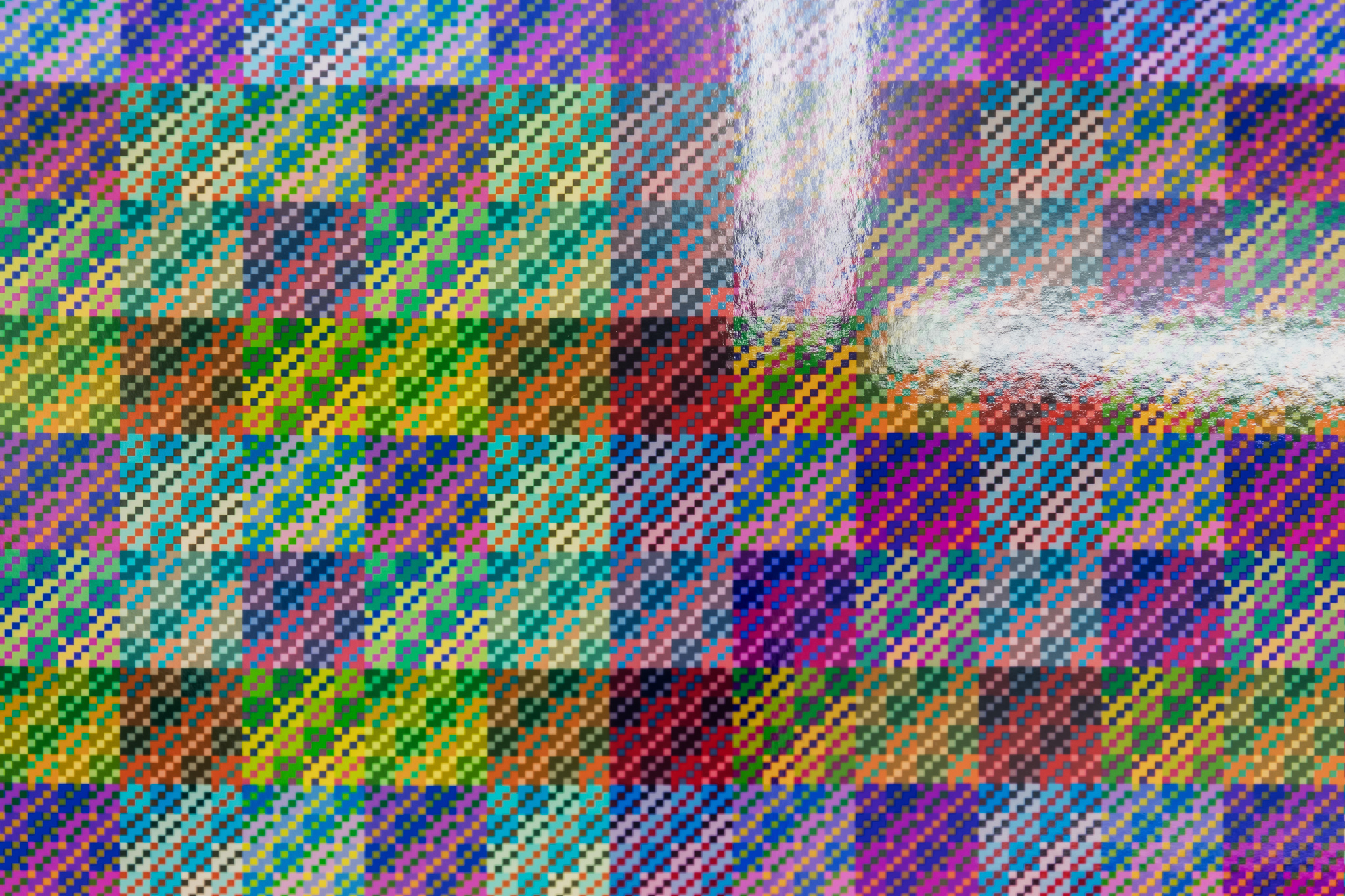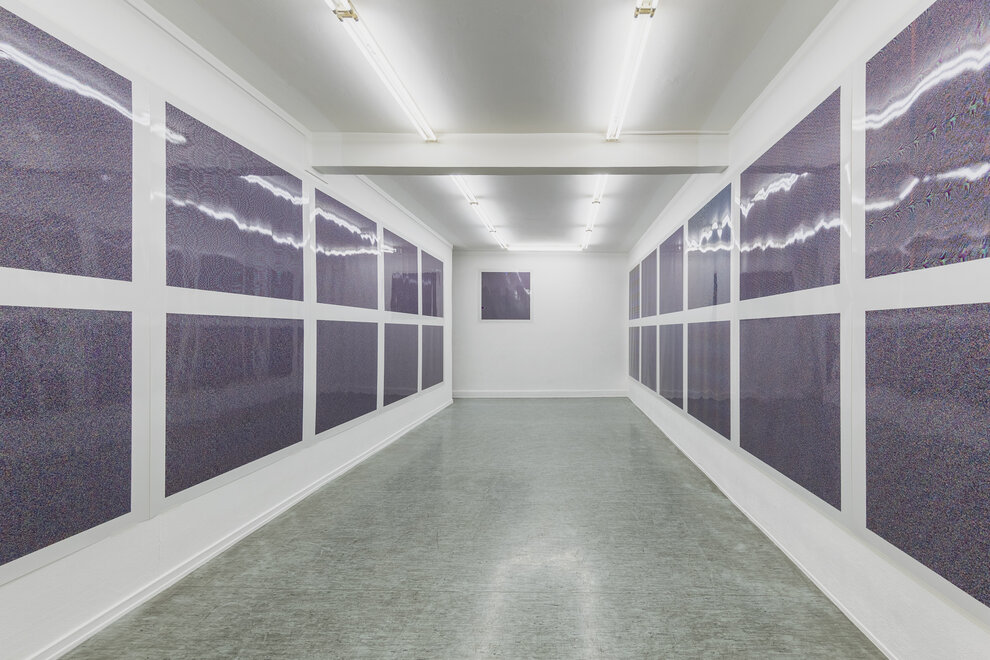minus 1
operate through the digital image space
Based on the fact that each digital image is represented by a numerical sequence, Johannes Franzen operates directly with the series of numbers and then transfers them back into the pictorial. Ultimately, the exhibition “Minus 1” shows photo exposures meandering between ornamentally repetitive structures, surprising shape explosions, and seemingly random color noises.
Franzen works with a mathematical operation, which from image to image he raises to a higher power. To this process he adds another shift, minus 1 being the formula of the guerilla operation. This minimal misalignment acts like an interference frequency, disrupting the usual patterns of perception. The series of pictures develops rhythmically, with strong references to each other, and ends in exalted Picture 24.
One may have to assume a reference loss, since the link to the usual image is missing. Then again, concerning the imaging of the process, could these 24 works of “Minus 1” be even more indexical than photographs of the conventional kind?
Practical Perception Critique yet again
While Franzen’s earlier cycles [4096 2] focused attention on the constitutive basic elements of the digital space, and his following series [recoding photography] accentuated the aspect (rather complementary than contrastive, first appearance to the contrary) of Perception’s ineluctable world relatedness (intentionality), the artist in his present works again reflects on the potentials and limits of the perceptive process.
Minus 1 — the title of the series may be understood as a cipher for Franzen’s approach. The invisibility of air, that specific opacity which the normal operation of functioning processes sets free as the first by product, necessarily requires alienated, imaginative access for its transfer into the area of the recognizable. To make transparent the all too transparent, this access has to happen in a proper manner , i. e. following the constitutional logic of the process, even strictly deriving from it, and yet not limited to it. Analogous to the philosophical procedure of the determinate negation, artistic practice here may be defined as a concrete displacement which sets free the perception of the perception.
Suddenly — another recurring feature of Franzen’s work — a series of quasi metaphysical questions arise on the horizon of this self reflection of the perceptual process: While the initial concern with the pixel as the constituent of the digital image space had already brought to light (in passing, as it were) philosophical concepts such as totality, contingency and order, now repetition and difference are suggesting themselves, in other words: the category of the event.
In one of his “Images of Thought”, Walter Benjamin relates that “the Hassidim have a saying about the coming world, which goes: everything will be arranged there as it is with us. [...] Everything will be as it is here — only slightly different.”* Franzen’s works seek out this utopian potential in the normal performances of the present.
michael wefers
*Walter Benjamin, Gesammelte Schriften, Band IV.1, S. 419 / Translated from Walter Benjamin, Gesammelte Schriften, vol. IV.1, p. 419









